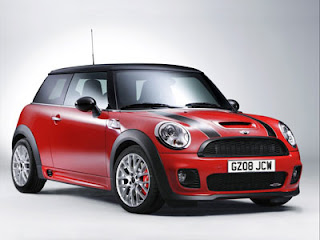Since it’s launch in 2001, the new BMW – owned Mini has gone from strength to strength. The reasons for this are numerous but include a fully automated, state of the art production process, excellent quality assurance systems, good links with suppliers, flexible work practices and high levels of capacity utilisation. In April 2007 the one Millionth Mini came of the production line at Oxford
The company operates a three shift system to enable the plant to have the capacity to work 24/7. The high levels of capacity utilisation are evident as in 1999, 3500 workers produced 56,000 Rover cars at the plant, whereas in 2007, 4,500 Mini workers were producing 200,000 Minis.
In 2000 BMW invested £230 million in the Oxford
The company aims to be as responsive to customer demand as possible and ensure that vehicles are built to the customer specification. Customers are able to choose from a range of different exteriors, roofs, upholstery and other equipment. Cars are available in a range of colours and the Mini Cooper models have contrasting roof colours in Black and White. Customers can even design their own Mini online using computer packages.
The body shop in the factory is highly automated, using hundreds of robots to assemble body panels and weld together body parts of the Mini. This process is integrated and co-ordinated by a sophisticated information technology system which ensures that processes are carried out in the correct order and that quality is maintained throughout the process through the use of Total Quality Management (TQM).
1) Assuming the maximum capacity utilisation of the plant is 224,000 calculate the capacity utilisation of the Mini plant in 2007. (4 Marks)
2) Explain the impact of an increase in capacity utilisation for BMW at the Mini plant. (4 Marks)
3) Analyse two advantages of BMW having high levels of customer service. (8 Marks)
4) Analyse the possible advantages to Mini of using TQM. (10 Marks)
